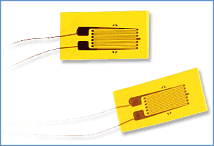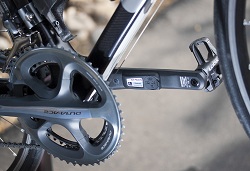The information below is from my upcoming book Ride Inside which will be published by VeloPress and Available on shelves in late November 2019
The Power Meter
When looking at the intensity of exercise, especially in the world of cycling, power is the ultimate metric. As we will explain later in Chapter 9, there are times where heart rate is a better metric to use, but overall all, cyclists must train using power to get better, faster and stronger. As we said above, the heart rate”™s biggest downside can be it greatest advantage. Conversely, power”™s biggest advantage can be it largest downside. Power is an absolute number, unchanging due to external factors that affect your life (sleep, stress, diet, emotional stability and more).
While many view this as a plus, it can be all too easy to implode during a race or very hard ride because you are trying to maintain a power number that your body is physiologically not able to maintain that particular day, regardless of your training.
So, what is power? Power is simply how much work you are doing on the bike. Power is measured in watts. The definition of a watt, from https://www.merriam-webster.com, is “the absolute meter-kilogram-second unit of power equal to the work done at the rate of one joule per second or to the power produced by a current of one ampere across a potential difference of one volt : ¹/₇₄₆ horsepower.”
Most of the tools we have looked at in writing this guide can provide you with power numbers, or have the capability to do so: trainers, indoor bikes and outdoor bicycles. Before we look at how those devices generate that data, you need to understand that most power numbers are an estimated value. This is a large area of contention currently in the indoor cycling market: if the power number on the bike is calculated or measured, but please know that all power displays on indoor bikes, and the power meters on outdoor bikes, estimate the data based on measurements and algorithms. What this means to you, the rider, is that you should attempt to use the same equipment each time that you train so that your data is consistent. The more serious you are about measuring your gains the more important this becomes.
How is Power Calculated
As mentioned above, power is the amount of work or energy that is being produced. The only true way to measure power is through the use of a dynamometer, or "dyno" for short. A dyno itself actually calculates the power data by simultaneously measuring torque and rotational speed (rpm). This is the type of measurement that most sports science labs utilize and this is the measurement that most bicycle power meters use to calibrate and rate their performance.
Most indoor bikes and outdoor bicycles use power meters that are constructed utilizing one or more strain gauges or load cells. In short, from https://www.merriam-webster.com, “a strain gauge is a device that consists of a fine wire firmly bonded to thin paper and that when attached to an object subjected to stress indicates minute changes in strain by corresponding changes in electrical resistance of the wire as it is likewise elongated.” To truly understand a strain gauge, we looked to Omega Engineering (https://www.omegaeng.cz/prodinfo/straingages.html):
A Strain gage (sometimes refered to as a Strain Gauge) is a sensor whose resistance varies with applied force; It converts force, pressure, tension, weight, etc., into a change in electrical resistance which can then be measured. Stress is defined as the object's internal resisting forces, and strain is defined as the displacement and deformation that occur.

For a more indepth explanaition we look to Omega Engineering (https://www.omegaeng.cz/prodinfo/straingages.html): Today, the typical power meter uses metal-foil strain gages. The metallic foil-type strain gage consists of a grid of wire filament (a resistor) bonded directly to the strained surface by a thin layer of epoxy resin. When a load is applied to the surface, the resulting change in surface length is communicated to the resistor and the corresponding strain is measured in terms of the electrical resistance of the foil wire, which varies linearly with strain. Interestingly, the most desirable strain gage materials are also sensitive to temperature variations and tend to change resistance as they age. So the power meters should be re-calibrated every so often to remain accurate, or at least as accurate as they were designed.
In order to measure strain with a bonded resistance strain gage, it must be connected to an electric circuit that is capable of measuring the minute changes in resistance corresponding to strain. Strain gage transducers usually employ four strain gage elements that are electrically connected to form a Wheatstone bridge circuit. The output voltage of the Wheatstone bridge is expressed in millivolts output per volt input.
Wow, that is a lot of technical knowledge. The most important take-away from all of this is that the power meters that you find on bicycles, both indoor and outdoor, calculate power. While you will use the power data to determine your training zones, and to perform your actual training, what is actually important about that data is the change in your numbers over the course of your training. What we mean by that is that if you begin your indoor training cycle with an FTP of 230w and end the cycle with an FTP of 260w you have gained strength, efficiency and endurance over the cycle provided that you have used the same power meter (or indoor bike) over that period and especially for starting and ending testing. While there are libraries of information on power meter and indoor bike accuracy, the delta in power from start to end is the bottom line. It is for this reason that we advocate the use of a bicycle equipped with a power meter, which can be paired with a Kinetic or Bkool trainer for E-Racing, for indoor training if you are serious about continuing your power when you return to outdoor riding in the spring.
Power Meter Features
We will take a look at the power applications in Chapter 6, but for now, let”™s look at the features that many power meters have. In general, power meters are a measurement tool. That tool then needs to send the data it calculates to some type of computer for storage and analysis. In most cases, that computer is in the form of a cycling computer, such as a Garmin Edge, Polar V650 or Wahoo Elemnt, or a sport (maybe multi-sport) watch such as the Garmin Forerunner, Polar Vantage or Suunto Spartan. All of these computer options have an amazing array of features and the ability to export or download the training data to other programs that can sort and analyze that data to give you unparalleled insight into your training and more importantly your strengths and weaknesses. This data can be paired with heart rate data for a complete view of your fitness level and progression.
- The Weekly Ride – 07/09/18 Strength - August 31, 2025
- The Weekly Ride – 02/17/20 Fast Furious Cadence - July 20, 2025
- The Weekly Ride – 021119 Spinning Valentines Spotify - April 22, 2025

